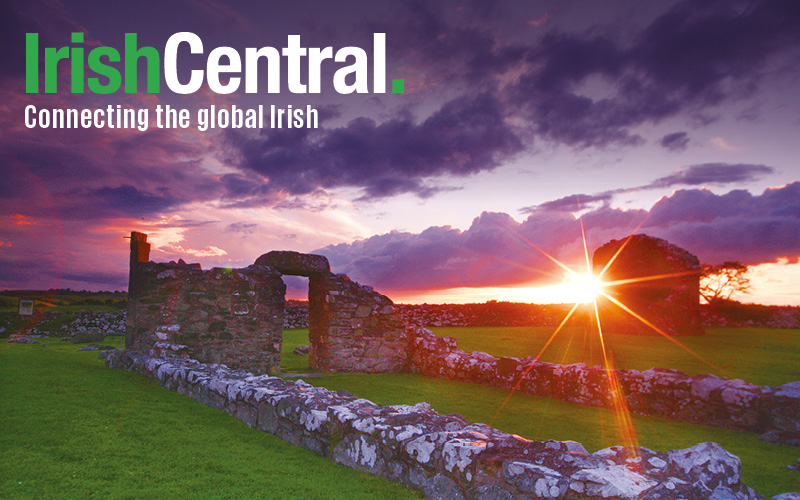On Friday Quinnipiac University in Hamden, Connecticut, will dedicate Ireland’s first Great Hunger Museum, which when it officially opens to the public on October 11 will become the world’s largest collection of visual art, artifacts and printed materials relating to the Irish Famine.
A weeklong program of cultural events and lectures to mark the opening of the groundbreaking facility has been scheduled for this week and will culminate in a dedication day this Friday, September 28.
First of the distinguished speakers to speak this week was Gerry Adams, president of Sinn Fein, who delivered a lecture titled Irish America and the Struggle for Freedom in Ireland on Tuesday, September 25 at Burt Kahn Court on the Mount Carmel Campus.
Catherine Marshall, the senior curator and head of the collection at the Irish Museum of Modern Art in Dublin, will moderate a panel discussion on the theme of Depicting the Great Hunger Through Art at 3:30 p.m. on Thursday, September 27 in the Grand Courtroom of the School of Law Center at Quinnipiac. This event is free and open to the public. Irish artists scheduled to participate in the discussion include Robert Ballagh, John Behan, Brian Maguire and Geraldine O’Reilly.
Acclaimed Irish historian Christine Kinealy, widely regarded as a world-renowned authority on the subject of the Irish Famine and its consequences, will deliver the lecture Fifty Years of the Great Hunger: The Remarkable Legacy of Cecil Woodham-Smith. on Thursday, September 27 at 7 p.m. in the Grand Courtroom of the School of Law Center.
It’s an auspicious start to one of the most important historical and cultural initiatives ever undertaken by a major U.S. university (or an Irish one, at that).
The collection at the new Hunger Museum will focus on the famine years from 1845-52, when blight destroyed virtually all of Ireland’s potato crops for consecutive years.
The museum makes clear that that the blight, coupled with longstanding British governmental indifference to the plight of the Irish, resulted in the for the most part needless suffering and deaths of 1.5 million Irish men, women and children and the emigration of more than two million to nations around the world.
The new museum also makes clear that the tragedy occurred even though there was more than adequate food in the country to feed its starving populace. The ports remained open, the tariffs were still paid. Exports of food and livestock from Ireland actually increased during the darkest years of the Great Hunger, at times under armed guard.
Art works by celebrated contemporary Irish artists will be featured at the museum, including internationally known sculptors John Behan, Rowan Gillespie and Eamonn O’Doherty. Other works by contemporary Irish visual artists like Robert Ballagh, Alanna O’Kelly, Brian Maguire and Hughie O’Donoghue will also be shown.
Featured paintings that capture some of the sense of crisis and calamity also will include several important 19 and 20 century works by artists such as James Brenan, Daniel MacDonald, James Arthur O’Connor and Jack B. Yeats.
When it opens to the public on October 11 the museum programs will include guided tours of the collection. The museum will also host discussions, films, plays and concerts, that will introduce and educate the general public, scholars, researchers, artists and students to the richness of Irish culture and the high quality of its visual arts in particular.
“I do not think Ireland has a much stronger visual culture than has been recognized and I want the museum to reflect that fact,” Quinnipiac president John L. Lahey told the Irish Voice. “The museum will give all comers the opportunity to reflect on the richness of Irish culture in a more comprehensive way. Yale University has the Yale Museum of British Art and I think this museum will give the New Haven area an interesting new viewpoint.”
The 4,750-square-foot museum invites visitors to explore what are still sadly the largely unrepresented and unresolved causes and consequences of the Great Hunger, as well as to appreciate the art that it continues to inspire in Irish artists.
“The building, which houses our new museum, was purchased after the success of the New York show and dates from the late 19 century when it was originally used as Hamden’s first free public library,” Lahey said. “After some significant renovation, it’s perfect for its new use, and we very much look forward to presenting it to the world.”
Niamh O’Sullivan, professor emeritus of visual culture at the National College of Arts and Design, is curator of the museum’s inaugural exhibit.
Quinnipiac is located 90 minutes north of New York City and two hours from Boston, in Hamden Connecticut. For more information visit www.quinnipiac.edu.




Comments